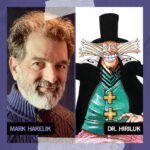Doctor Who’s third season, helmed by the ever-popular Tenth Doctor, portrayed by David Tennant, is often described as a season of contrasts. Following the critically acclaimed first and second seasons of the revived era (NuWho), season 3 presents a fascinating, if somewhat uneven, collection of episodes. It’s a season where some of the most celebrated episodes of modern Doctor Who coexist with some of its more criticized installments. This season is also marked by a distinct undercurrent of melancholy and grittiness, directly reflecting the Doctor’s internal struggles and emotional landscape after the loss of Rose Tyler.
One of the defining aspects of Doctor Who season 3 is the portrayal of the Tenth Doctor as emotionally complex and, at times, flawed. Still grappling with the emotional fallout from Rose’s departure, the Doctor’s interactions, particularly with his new companion Martha Jones, reveal a character in a state of flux. Martha, a capable and intelligent medical student, brings a fresh dynamic to the TARDIS. Her unrequited feelings for the Doctor offer a poignant exploration of companionship and the often-complicated emotional terrain of traveling with the Time Lord. While some argue Martha wasn’t given the depth afforded to previous companions, her journey through season 3 is undeniably intertwined with the overarching themes of loneliness, emotional voids, and the often-imperfect ways people cope with loss. Let’s delve into a ranking of season three’s episodes, exploring its peaks and valleys.
Lower Tier Episodes: The Misses of Season 3
12. “Daleks in Manhattan” / “Evolution of the Daleks” (Episodes 4 & 5)
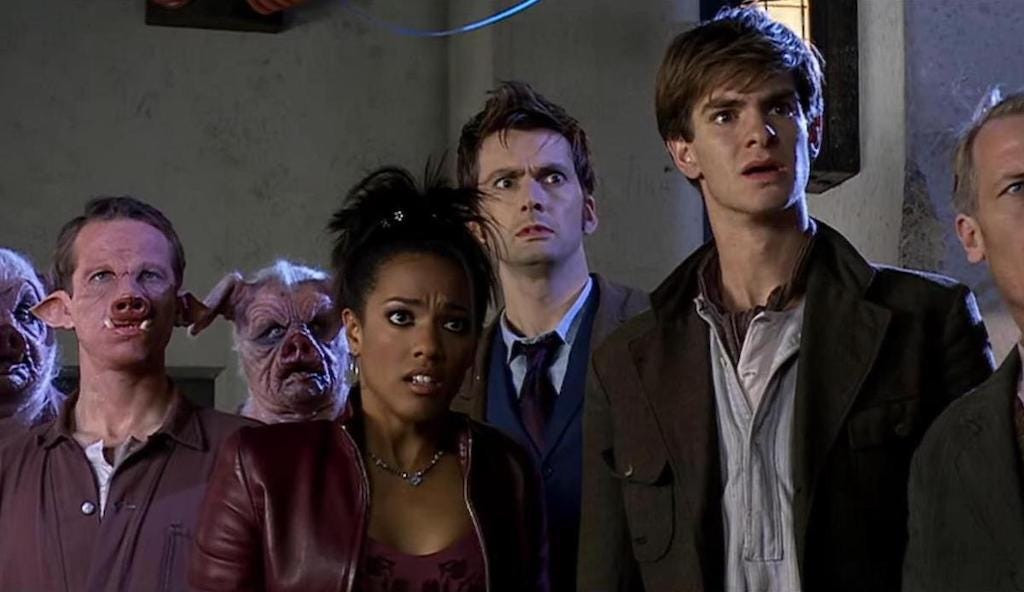 Daleks in 1930s New York City plotting their next move, as seen in Doctor Who Season 3.
Daleks in 1930s New York City plotting their next move, as seen in Doctor Who Season 3.
The ambitious two-part story set in 1930s New York City, “Daleks in Manhattan” and “Evolution of the Daleks,” unfortunately falls short of its potential. Combining elements of a campy B-movie with a narrative touching upon the Great Depression and Dalek morality, the result is often disjointed and tonally inconsistent. Doctor Who stories set in America have historically been a mixed bag, and this particular adventure exemplifies the pitfalls. While the 1930s setting initially offers promise, the introduction of the human-Dalek hybrid, Dalek Sec, marks a significant departure into the absurd. Even a young Andrew Garfield’s guest appearance isn’t enough to salvage this story from its convoluted plot and questionable creative choices, making it a low point in Doctor Who season 3.
11. “The Lazarus Experiment” (Episode 6)
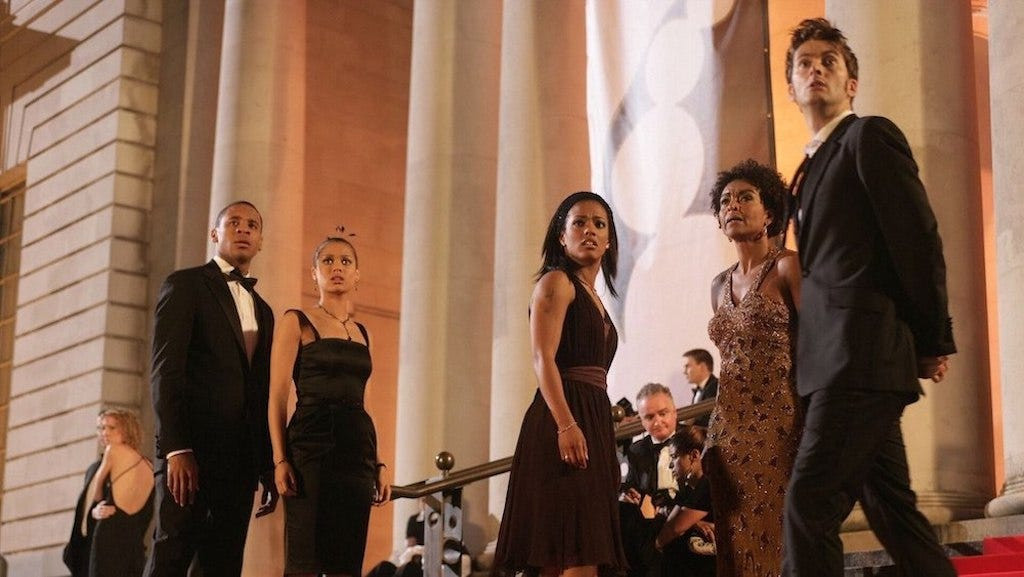 Martha Jones and The Doctor looking concerned at Professor Lazarus's transformation in Doctor Who episode The Lazarus Experiment.
Martha Jones and The Doctor looking concerned at Professor Lazarus's transformation in Doctor Who episode The Lazarus Experiment.
“Forgettable” might be the kindest descriptor for “The Lazarus Experiment.” This episode stars Mark Gatiss in a triple role – creepy old man, creepy young man, and creepy lizard man – but fails to generate much excitement. While not offensively bad, it lacks depth and impact. More disappointingly, it underscores the disparity in character development between Martha and previous companions like Rose. The nuanced family dynamics and personal stories that enriched Rose’s tenure are noticeably absent for Martha, making this episode easily skippable during a Doctor Who season 3 rewatch. It stands as a missed opportunity to further develop Martha’s character early in the season.
10. “The Shakespeare Code” (Episode 2)
“The Shakespeare Code” had all the ingredients for a standout historical episode. William Shakespeare, a figure ripe for Doctor Who‘s brand of historical fiction, set in the vibrant Elizabethan era. However, the episode leans heavily into cheesy territory, undermining its narrative potential. Shakespeare himself is portrayed as surprisingly bland, lacking the wit and complexity one might expect. While the burgeoning dynamic between Martha and the Doctor adds a layer of interest, the episode overall lacks the cleverness and sophistication that a story centered around the Bard should possess. It remains a somewhat underwhelming historical jaunt in Doctor Who 3rd Season.
9. “The Sound of Drums” / “Last of the Time Lords” (Episodes 12 & 13)
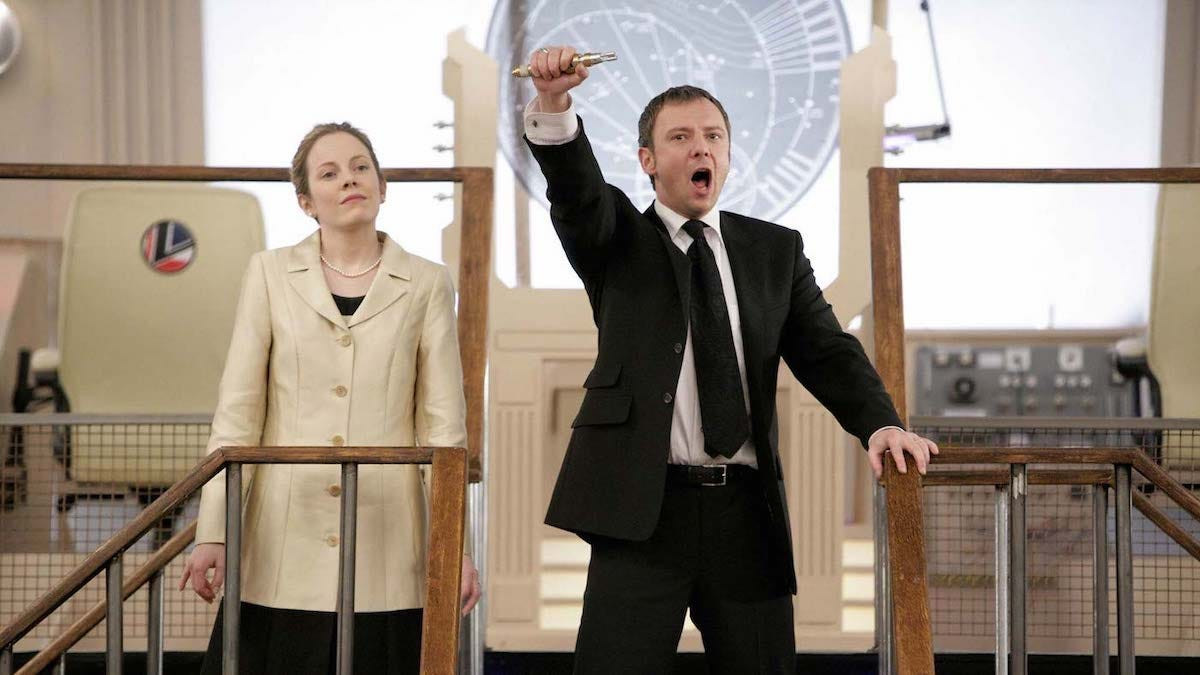 The Master, played by John Simm, grins maniacally in Doctor Who's season 3 finale, The Sound of Drums.
The Master, played by John Simm, grins maniacally in Doctor Who's season 3 finale, The Sound of Drums.
As the weakest of Russell T Davies’ (RTD) finales, “The Sound of Drums” and “Last of the Time Lords” are largely carried by the electric chemistry between David Tennant’s Doctor and John Simm’s Master. Unfortunately, viewers must wade through considerable narrative missteps to appreciate this dynamic. The infamous CGI “Dobby Doctor” is a major visual distraction, and the pacing feels uneven. The Toclafane twist, while dark, is unsettling in a way that detracts from the story, and the ultimate reset of events feels somewhat facile. While Martha’s non-traumatic departure is a welcome change, it occurs within a finale that ultimately weakens what was otherwise a strong second half of Doctor Who season 3.
Solid Tier Episodes: Dependable Adventures
8. “The Runaway Bride” (2006 Christmas Special)
 Donna Noble in her wedding dress, bewildered by her sudden appearance in the TARDIS in The Runaway Bride.
Donna Noble in her wedding dress, bewildered by her sudden appearance in the TARDIS in The Runaway Bride.
A blend of wacky farce and somber reflection on genocide, “The Runaway Bride” is quintessential RTD-era Doctor Who. As a Christmas special, its tone is amplified, sometimes to its detriment, sometimes to its advantage. The plot itself is somewhat thin for a 60-minute episode, but the initial spark of chemistry between David Tennant and Catherine Tate as Donna Noble is undeniable and captivating. Donna’s role as a pivotal figure in the Doctor’s post-Rose emotional journey is thoughtfully handled. Overall, “The Runaway Bride” serves as an effective tonal shift after the heavy conclusion of season two, offering a lighter, yet still thematically resonant, adventure in the Doctor Who 3rd season timeline.
7. “42” (Episode 7)
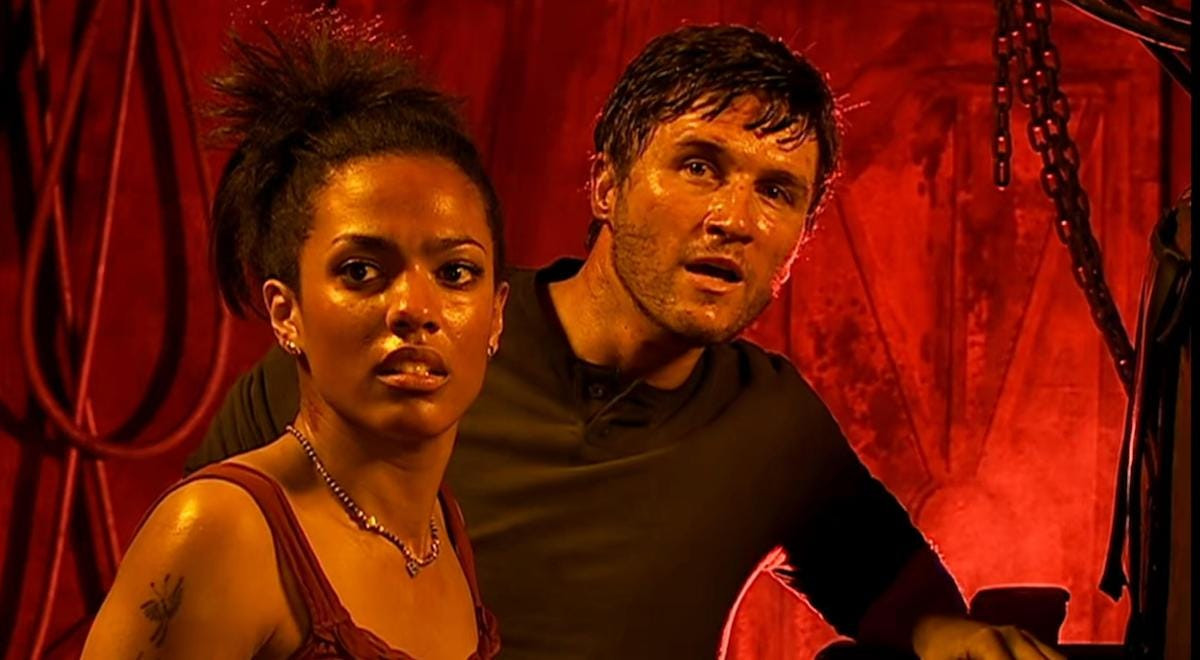 The Doctor and Martha racing against time in the tense episode "42" from Doctor Who season 3.
The Doctor and Martha racing against time in the tense episode "42" from Doctor Who season 3.
Season 3’s “base-under-siege” episode, “42,” while not reaching the heights of “The Impossible Planet” / “The Satan Pit,” is a solid and engaging hour of television. The real-time format maintains a high level of tension, and the episode features some genuinely eerie visuals, such as Martha adrift in space in an escape pod. Coupled with a compelling central mystery revolving around a sentient sun, “42” delivers as a strong adventure-of-the-week. The fact that it aired shortly after Danny Boyle’s Sunshine adds an interesting layer of contemporary sci-fi context to this episode within Doctor Who 3rd season.
6. “Voyage of the Damned” (2007 Christmas Special)
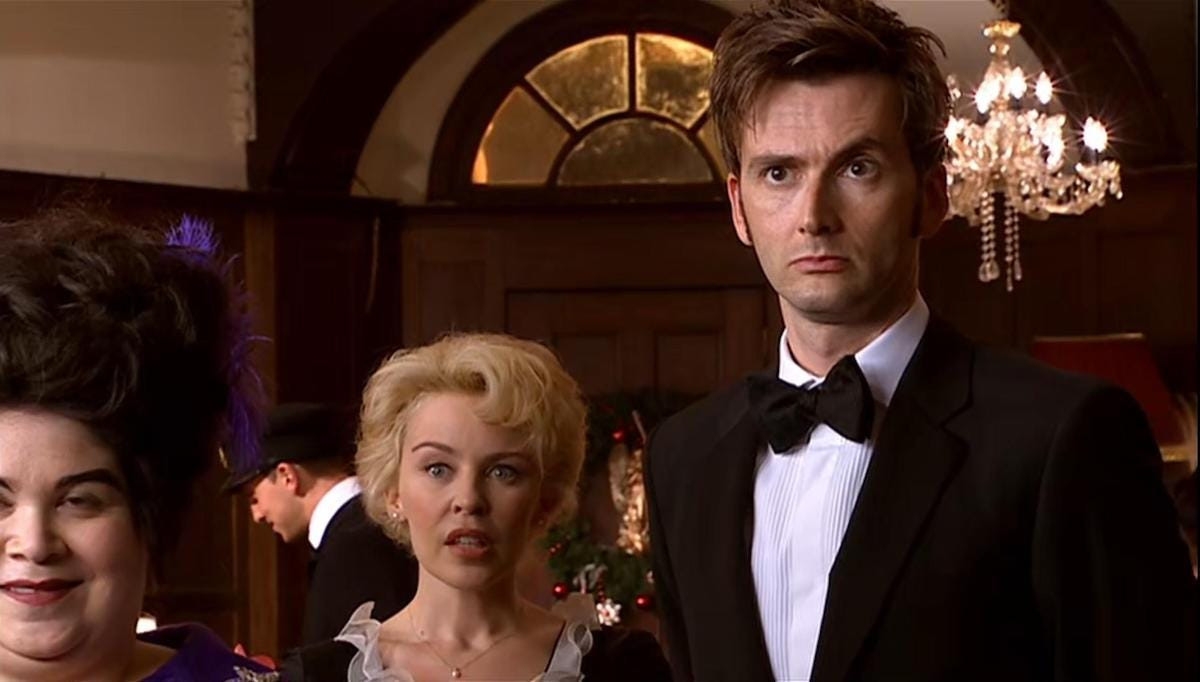 The Doctor and Kylie Minogue amidst the chaos of the spaceship in distress in Doctor Who's Voyage of the Damned.
The Doctor and Kylie Minogue amidst the chaos of the spaceship in distress in Doctor Who's Voyage of the Damned.
“Voyage of the Damned” takes the classic disaster movie trope and sets it in space, offering a unique Christmas spectacle. Remarkably, this “fun” Christmas special within the Doctor Who 3rd season actually features a high death count among its likeable supporting characters. Kylie Minogue’s charming guest performance sets the tone for an enjoyable romp with subtle capitalist satire woven in. However, the true highlight is David Tennant’s exceptionally suave and charismatic portrayal of the Doctor, making “Voyage of the Damned” a delightful and memorable Christmas installment.
5. “Gridlock” (Episode 3)
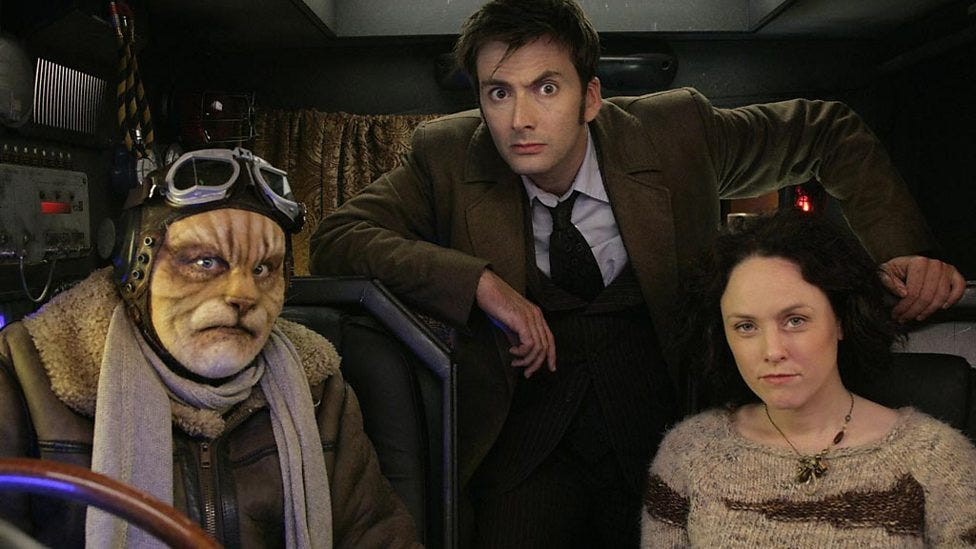 The Doctor and Martha amidst the endless motorway of New New York in Doctor Who's Gridlock episode.
The Doctor and Martha amidst the endless motorway of New New York in Doctor Who's Gridlock episode.
Completing the Face of Boe/New New York trilogy that began with “The End of the World” and “New Earth,” “Gridlock” is a stylish and creative episode. It embodies the qualities of a strong episodic adventure: a blend of humor, thought-provoking concepts, and social commentary. “Gridlock” operates on multiple levels, from the Doctor’s attempts to recapture moments with Rose to the unexpected sense of community found within the gridlocked motorway. Often overlooked, “Gridlock” is an unsung gem of season three, deserving of reconsideration for its depth and pathos in the context of Doctor Who 3rd season.
4. “Utopia” (Episode 11)
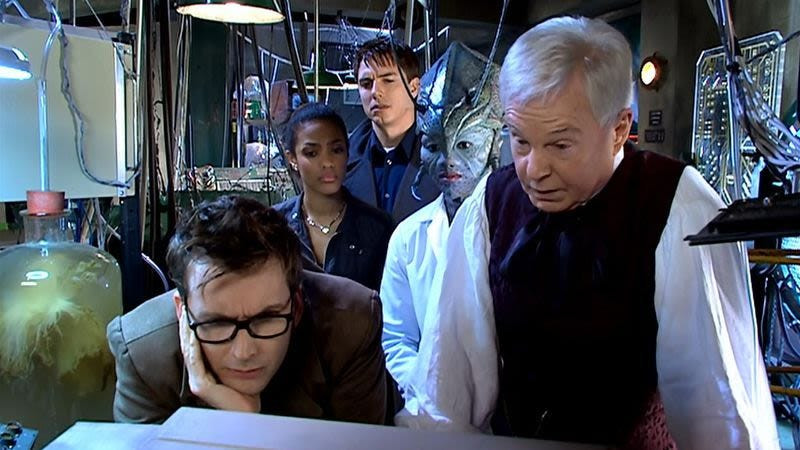 Captain Jack Harkness dramatically returns in the desolate setting of Utopia, a Doctor Who season 3 highlight.
Captain Jack Harkness dramatically returns in the desolate setting of Utopia, a Doctor Who season 3 highlight.
RTD frequently employs a sense of unease in his penultimate episodes, and “Utopia” exemplifies this perfectly. Set in a bleak refugee camp at the very edge of the universe, the atmosphere is palpably tense. Even Captain Jack’s highly anticipated return is characterized more by anxiety and urgency than celebration, a dynamic brilliantly portrayed by David Tennant. Elevated by Derek Jacobi’s phenomenal performance as Professor Yana, “Utopia” marks a significant escalation in RTD’s showrunning, skillfully weaving together season-long and series-wide narratives into a game-changing cliffhanger. While it’s only half a story, leading into a finale that some find underwhelming, “Utopia” remains an intriguingly dark and compelling episode, fitting perfectly within the overall tone of Doctor Who season 3.
Top Tier Episodes: Season 3 Masterpieces
3. “Smith and Jones” (Episode 1)
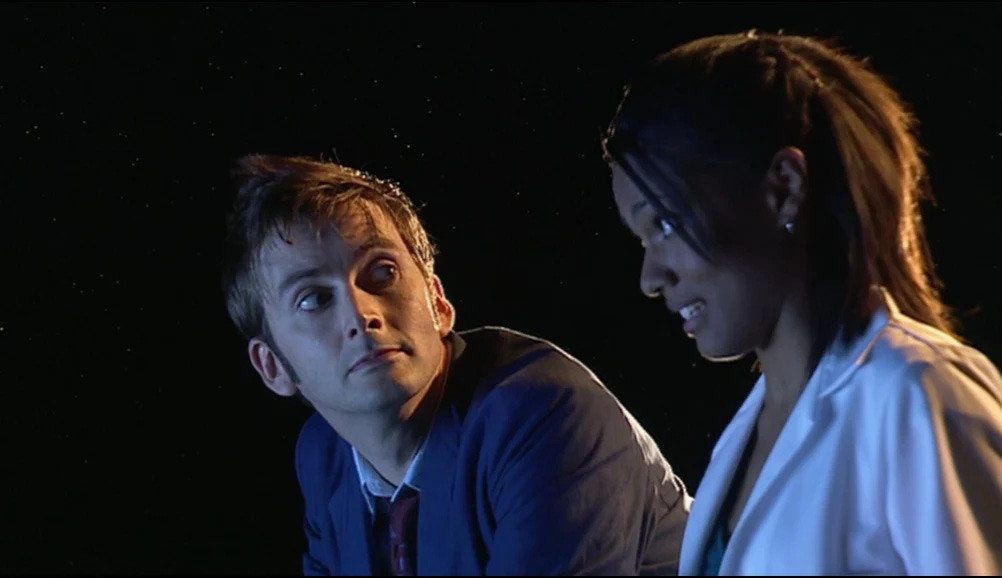 The Judoon menacingly surround Martha Jones and The Doctor on the moon in Doctor Who's Smith and Jones.
The Judoon menacingly surround Martha Jones and The Doctor on the moon in Doctor Who's Smith and Jones.
“Smith and Jones” is arguably one of the most underrated episodes in the entire Doctor Who canon. A fun, distinctive sci-fi romp, it serves as a stylish season opener and convincingly establishes why the Doctor chooses Martha as his new companion. Indeed, this may be Martha’s strongest episode, showcasing her composure and intelligence under extraordinary circumstances. The moon-on-Earth setting is atmospheric, the Judoon are entertaining antagonists, and the concept of the Doctor traveling with a medical doctor is cleverly executed. Tennant and Agyeman’s chemistry is particularly vibrant here, a spark they don’t quite recapture as effectively in later episodes of Doctor Who season 3. It stands as RTD’s best premiere episode and a fantastic start to a season of highs and lows.
2. “Blink” (Episode 10)
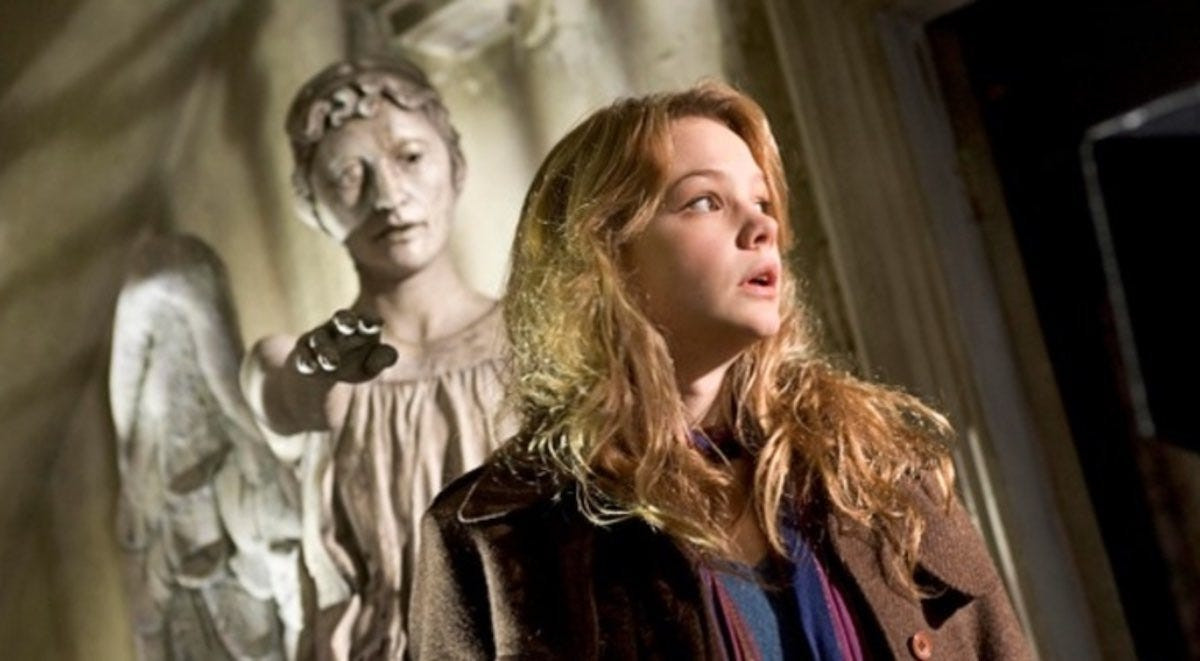 Sally Sparrow confronts the terrifying Weeping Angels in the iconic Doctor Who episode Blink.
Sally Sparrow confronts the terrifying Weeping Angels in the iconic Doctor Who episode Blink.
Little needs to be added to the praise already heaped upon “Blink.” A phenomenal piece of sci-fi television, it introduced the Weeping Angels, now considered among the most iconic monsters of modern Doctor Who. Anchored by a pre-Oscar nominated Carey Mulligan, the episode’s Doctor-lite structure makes it accessible to new viewers. “Blink” is scary, witty, meta, and surprisingly poignant. It remains as captivating and effective today as it was upon its release over fifteen years ago, cementing its place as a timeless classic within Doctor Who season 3 and the series as a whole.
1. “Human Nature” / “The Family of Blood” (Episodes 8 & 9)
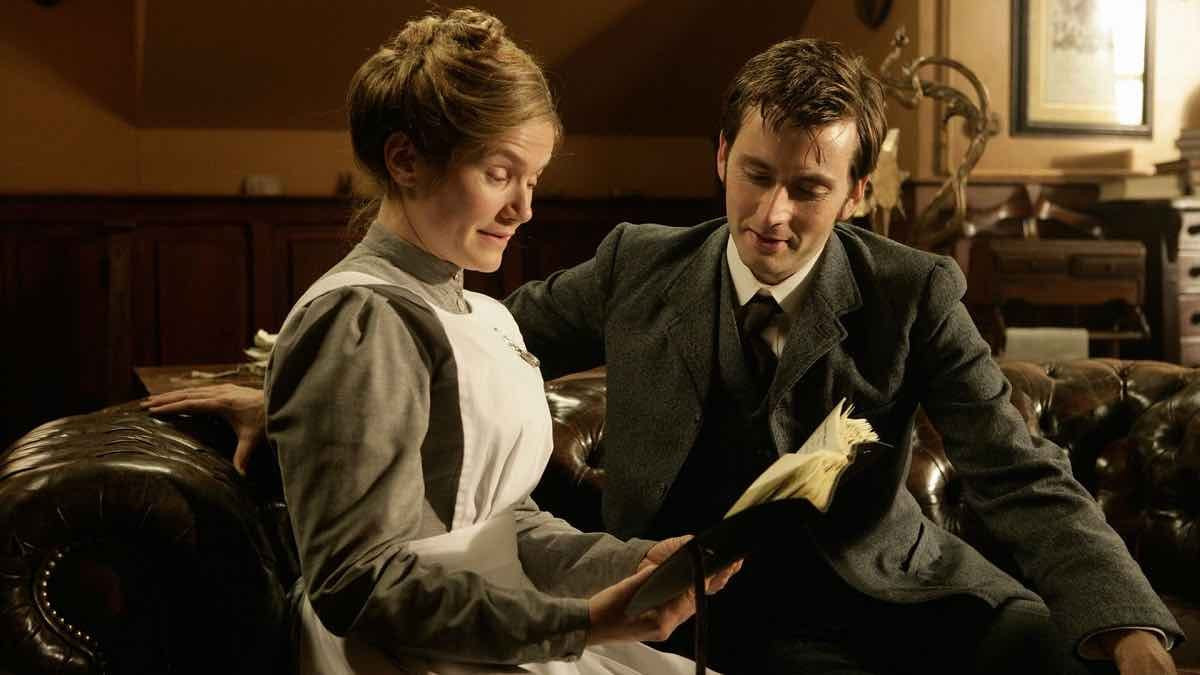 The Doctor, as human John Smith, looks longingly at Joan Redfern in the poignant Doctor Who two-parter Human Nature/The Family of Blood.
The Doctor, as human John Smith, looks longingly at Joan Redfern in the poignant Doctor Who two-parter Human Nature/The Family of Blood.
While “Blink” is undeniably brilliant, “Human Nature” / “The Family of Blood” stands as the true masterpiece of Doctor Who season 3, and arguably of the entire RTD era. This two-part story is one of NuWho’s most profoundly dramatic outings, deeply invested in both the horror of its alien invasion plot and the emotional intricacies of its human narrative. The pre-World War I setting is masterfully utilized to underscore themes of sacrifice, love, cruelty, and the futility of war. David Tennant delivers an astonishingly transformative performance, complemented by Jessica Hynes’ equally superb supporting role. For all his love of humanity, the Doctor’s inherent alien nature prevents him from truly grasping what it means to be human. This two-parter poignantly and powerfully illustrates this central point, making it the crowning achievement of Doctor Who 3rd season.
Coming soon on The Boot Doctor: Further explorations into the world of Doctor Who and other iconic TV series. Stay tuned!

